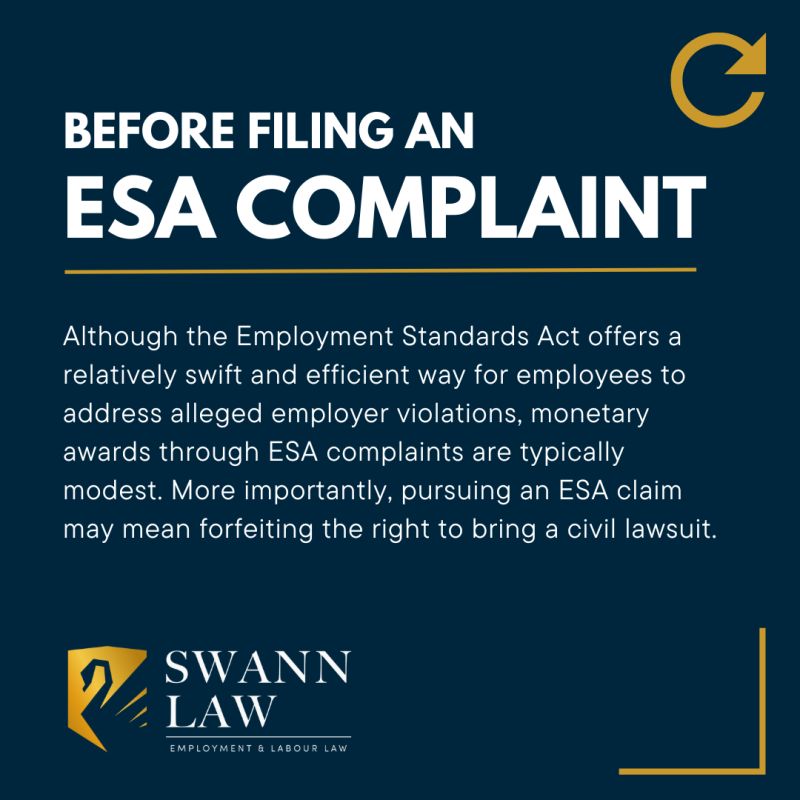If you believe you were wrongfully dismissed, deciding whether to file an Employment Standards Act (ESA) claim with Ontario’s Ministry of Labour or a civil claim in court depends on the outcome you’re seeking.
Considering how slow-moving and expensive it can be to navigate Ontario’s civil justice system, why fired workers may be tempted to file an ESA claim instead. The ESA process provides employees with a relatively quick, low cost and efficient method of redress for an employer’s alleged breaches of the Act, including:
• Unpaid wages
• Unpaid overtime
• Unpaid statutory termination and severance pay (but only the ESA minimums which are a number of week, rather than months)
• Failure to provide an entitled leave of absence
However, monetary awards for ESA complaints are modest and when it comes to termination pay, awards will be limited to a week or two per year of service, far less than the months of severance a court can award.
More importantly, ESA claimants should also be aware that they may be giving up their right to sue in civil court.
Under the ESA, employees who file Ministry complaint for unpaid wages or termination pay are barred from starting a civil claim relating to the same matter, unless they withdraw their complaint within two weeks of filing.
In Belyavsky v. Walsh, 2022, a financial advisor terminated after less than 3 months of service filed an ESA complaint seeking termination pay. Although he got a ruling within 10 weeks, the news wasn’t great: He was awarded only $100 for emotional pain and suffering for the way the employer handled his firing, and he received no termination pay as a result of his short tenure.
When he subsequently launched a civil claim for wrongful dismissal, the employer rightly argued he had forfeited that right by proceeding with the ESA complaint, before the matter was ultimately settled out of court.
If you’ve been wrongfully dismissed and are unsure about your rights, we can help. Please reach out to our team to get legal advice tailored to your specific case.


